
Jeanine Michna-Bales
Fallout: The Psychological Impact of the Cold War on America, circa 1960 On December 22, 2016, both President-elect Donald Trump and Russian President Vladimir Putin announced the intent to increase their respective countries’ nuclear arsenals. Hearing this we might actually think that we had stepped back in time to the...
Fallout: The Psychological Impact of the Cold War on America, circa 1960
On December 22, 2016, both President-elect Donald Trump and Russian President Vladimir Putin announced the intent to increase their respective countries’ nuclear arsenals.
Hearing this we might actually think that we had stepped back in time to the height of the Cold War. In light of these announcements and other recent developments, it is more vital than ever to view our uncertain present through the lens of the past.
Thousands of fallout shelters were left behind by the Cold War generation. Many remain intact, but are hidden, underground and unseen. I believe, in many ways, these spaces may be viewed as a warning to us today. Referencing declassified information from the Cuban Missile Crisis, I have been working since 2013 on a series that gives voice to these unique architectural spaces that were built throughout the U.S. in the 1950s and ‘60s. Spaces that one can step into and feel how terrified most Americans actually were at the thought of a nuclear holocaust. The images highlight the Cold War experience through shelter spaces in 14 cities.
Found documents from the period overlaid on some of the images offer a chilling insight into the psychological effects of the Cold War on government officials and ordinary citizens. These period documents play an important role by serving as a kind of ‘interview’ with those who lived through this experience but are no longer here to bear witness. The juxtaposition of shelter spaces that have remined virtually untouched except by the effects of time, and found text like casualty statistics helps us understand that Civil Defense was only a way to maintain some semblance of order. Most major cities only had enough shelter space for roughly 40% of their daytime population. With the advent of faster technology to deliver the bombs in the 60’s and later, the remaining populace would face dire circumstances if they survived at all.
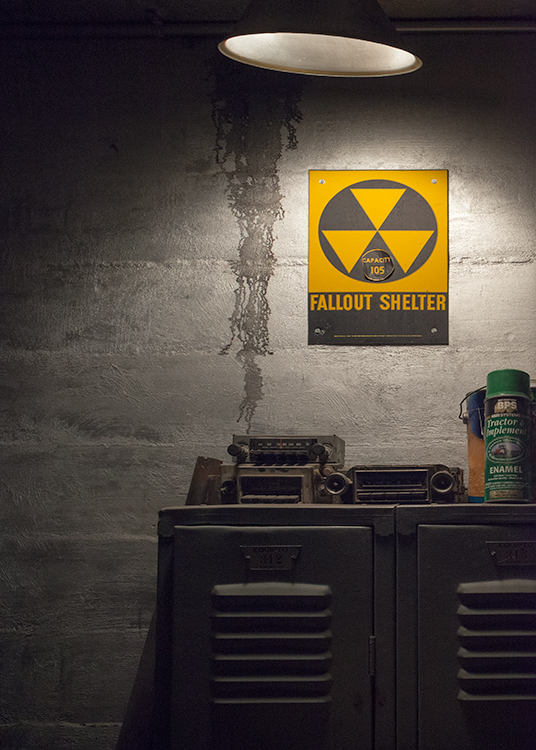
Capacity 105. Public shelter, power plant, Weatherford, TX
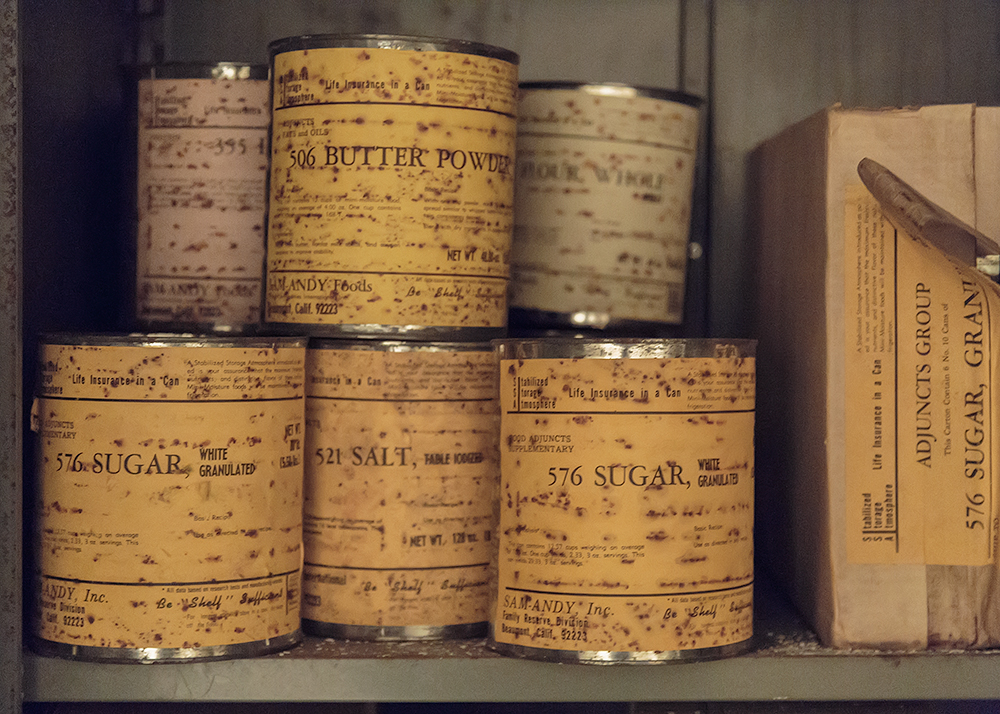
Life Insurance in a Can. AT&T Underground Coaxial Cable Station, Ft. Pierce, FL
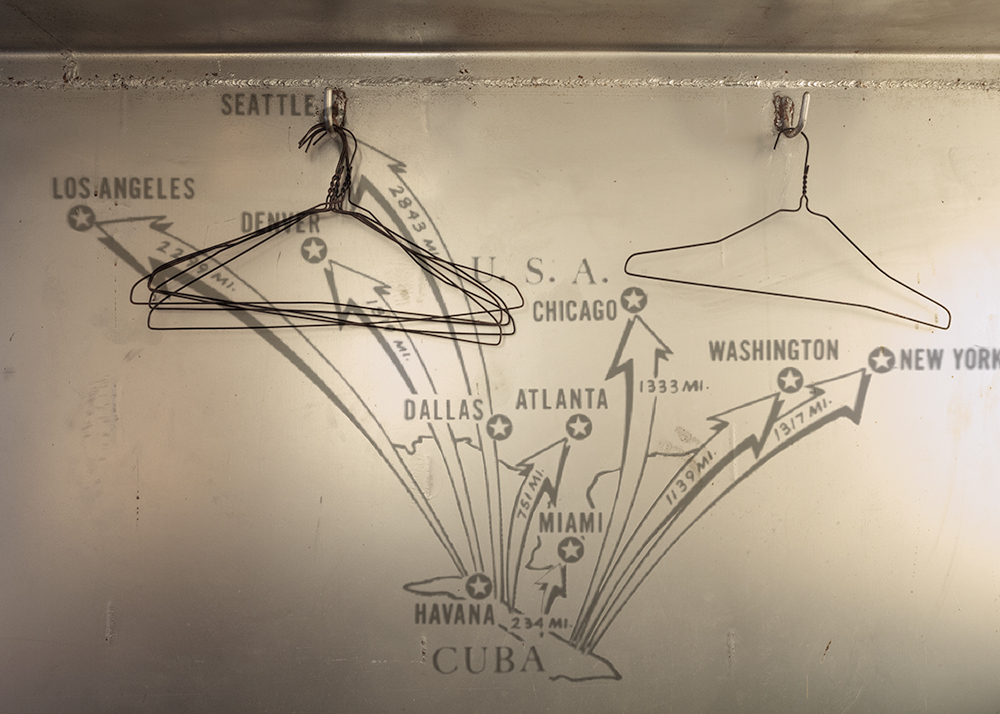
Missile Range. Private shelter, Dallas, TX; text, 1962
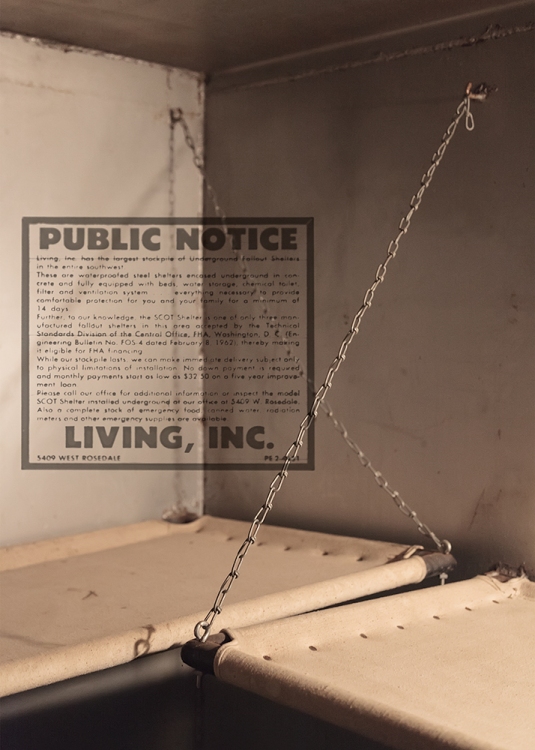
Home Fallout Shelter Ad. Private Shelter, Dallas, TX
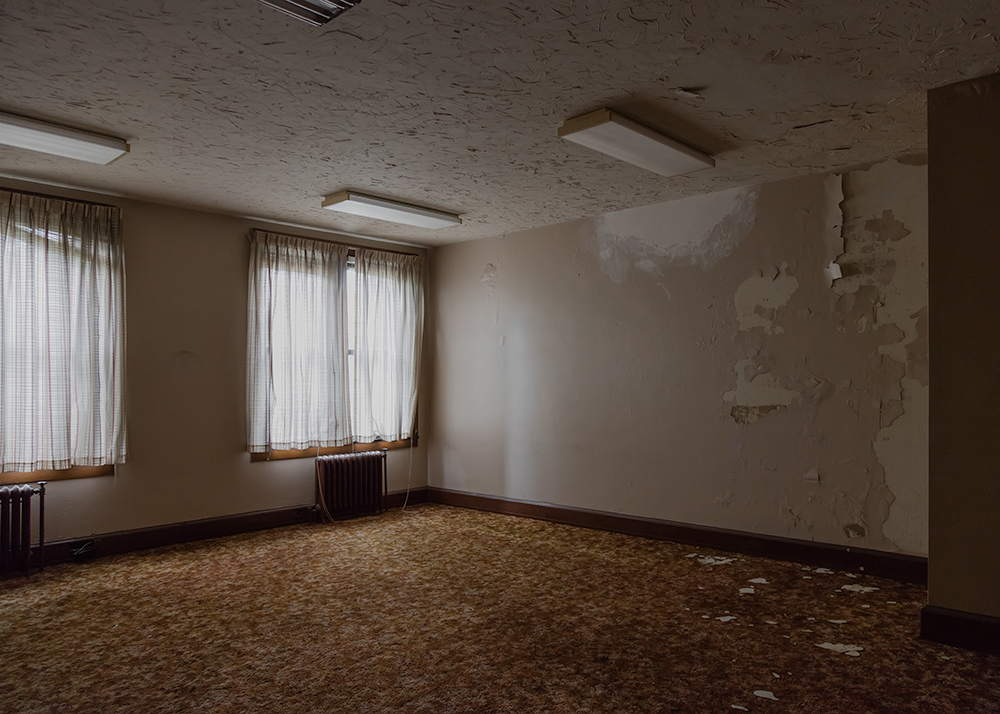
Former Civil Defense Offices. Indianapolis Civil Defense Headquarters, IN
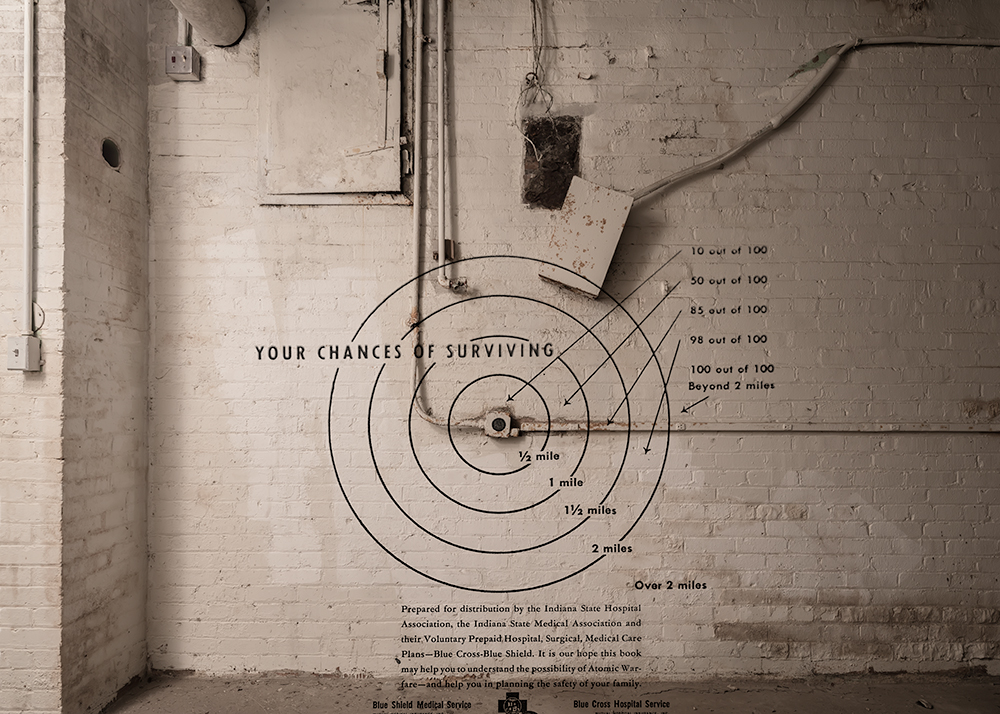
Survival Chances. Indianapolis Civil Defense Headquarters, IN
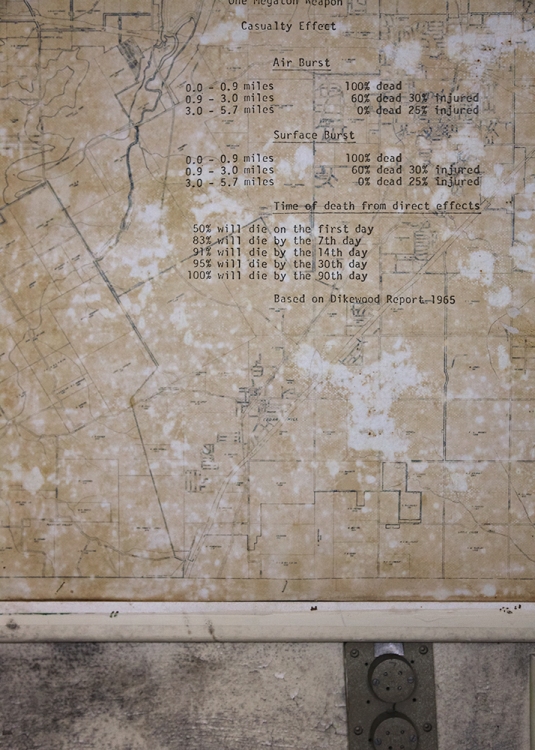
Casualty Effect. Dallas Civil Defense Emergency Operations Center, TX; text 1965
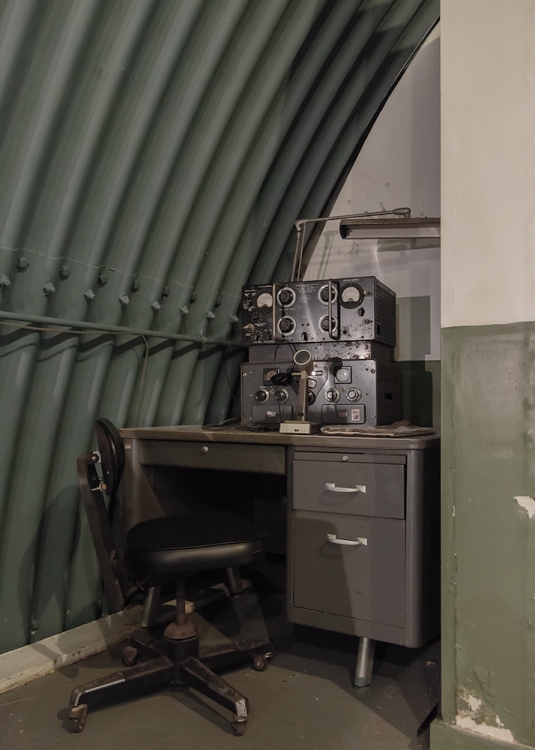
Ham Radio. John F. Kennedy Atomic Bomb Shelter & Command Post, Peanut Island, FL
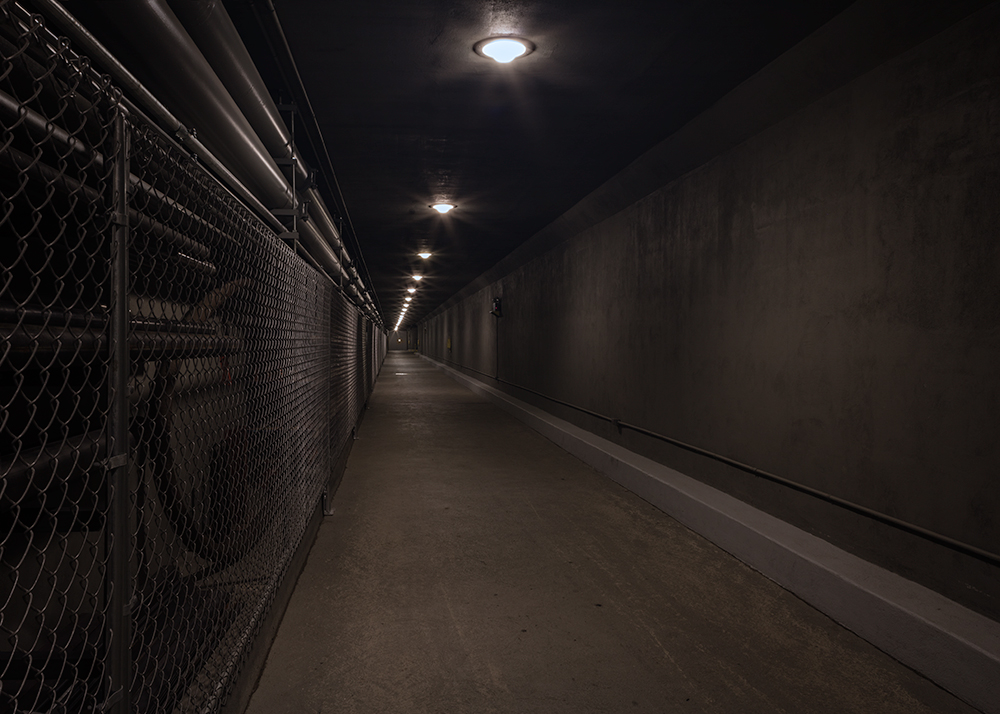
Secret Entrance. Project Greek Island, U.S. Govt Relocation Facility, WV
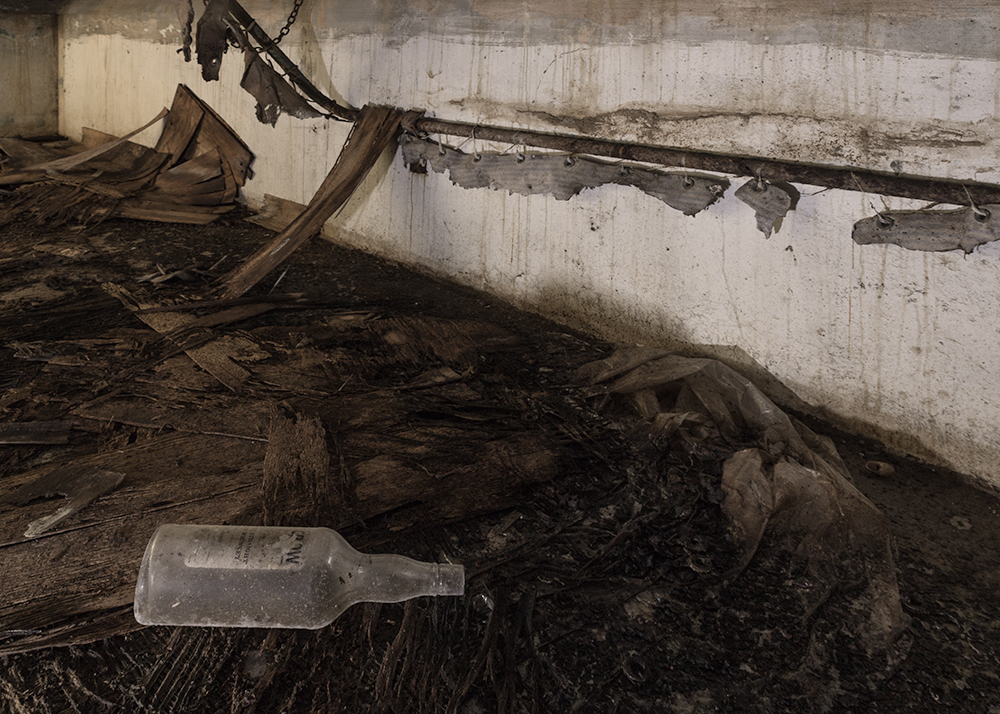
Deteriorated Shelter. Private shelter, Los Angeles, CA



